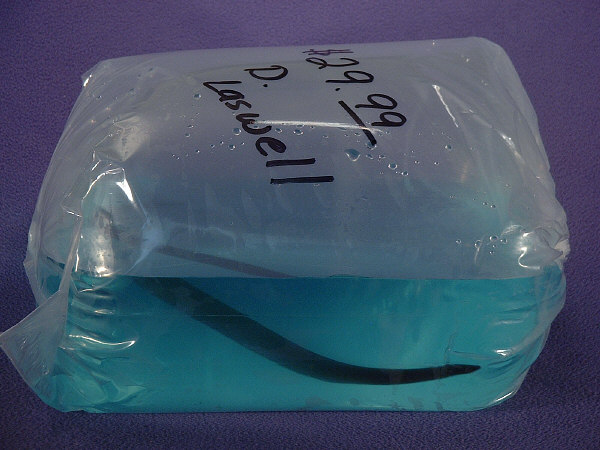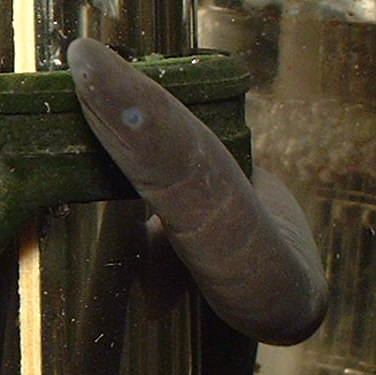
I still remember exactly how it happened. It was early in my days of owning aquariums, and I regularly stopped by the local pet stores to see all of the interesting fish. Some of the ones I just liked to look at included the bumbling Spiny Boxfish , and the exotic Mandarin Dragonet . Both, unfortunately, require a saltwater tank, and are very difficult to keep in captivity, so I settled for the occassional viewing at one of the local pet stores. Others, like the African Butterfly , I have actually bought, but I was never able to keep them for more than a year. One day, however, I walked in, and about half-way down the freshwater stacks, I spotted it. A 10″ long thin tube of grey with a sock-puppet head, lazily swimming back and forth across the tank. I glanced over at one of the store clerks and said, “I want to buy that. How much is it?” It ended up costing me a mere $20, and I was happily on my way with a ‘Black Rubber Eel’. A little research on the internet revealed that it was actually a Caecilian Worm , which is an amphibian, not a fish. Specifically, it was a member of the Typhlonectes Natans family.
It took a while before it was willing to eat, and even then I had to hold it in one hand and stick tweezer-loads of frozen bloodworms directly in front of its head, but it wasn’t long before it had a ravenous appetite. I discovered that it would chomp down on the large algae discs and try to swim through them in order to rip chunks loose, and within about a year it was able to swallow 3/8″ wide food pellets whole. If it could find them. That’s the problem with these guys. Caecilian Worms are literally the dumbest animals on the face of the earth. They make domesticated turkeys look like geniuses (and turkeys will drown in a rainstorm because they look up with their mouths open). To keep them long-term, they must be in a tank that is sealed up almost airtight, or they will find a way out. Mine, at 20″ in length, turned out to be strong enough to pry the back of the glass lid up, even though it was clipped to the back of the tank. Unfortunately, I was not aware of this, or I could have prevented its untimely death by setting small rocks on the lid to hold it down.
Way at the top of this page, you can see one of the few photos I have of this special little character. My camera doesn’t like taking aquarium shots, so this is the image with the best quality. These creatures are getting very hard to find in the US, since a couple years ago some government type finally figured out that they are amphibians, so it is now illegal to import them into the US, and the only ones available are raised by local breeders. And that’s where we get to the answering machine message that made me so happy. A few days after discovering the loss of my first Caecilian Worm, I called around, and one local pet store had a source for these lined up. Thursday they called me to say that they were once again listed on the order sheet, and that my new pet would be arriving on Friday, though due to the ban on importing them, it would cost me $30 for what turned out to be a similarly sized specimin (about 11″ long this time). Unfortunately, I didn’t check my machine until really late Friday, so I had to wait until Saturday morning to go pick it up.

Here you can see how it ships. Double-bagged, to prevent death by bag-puncture, and packed in this special blue water which I’ve been told is hyper-oxygenated and contains special chemicals to ensure a low-stress trip. This is especially important because a lot of the more exotic fish species are highly susceptible to stress-induced death.

And here we have a shot of Yin, wrapped around the algae-coated tank heater, shyly peeking out at the camera after swimming frantically around the tank for the first couple hours. Unfortunately, this one isn’t in the greatest health right now. It’s got about a half dozen little whitish blisters on various parts of its body. I never saw these on my first one, but I’ve been told that they are caused by poor water conditions, and that they will shrink each time the skin is shed as long as the water conditions remain within a tolerable range. Anyways, while Yin won’t ever be able to replace my first Caecilian, I’m glad that I was able to acquire another one, and maybe this one will live a few decades like some people have reported.
0 Comments